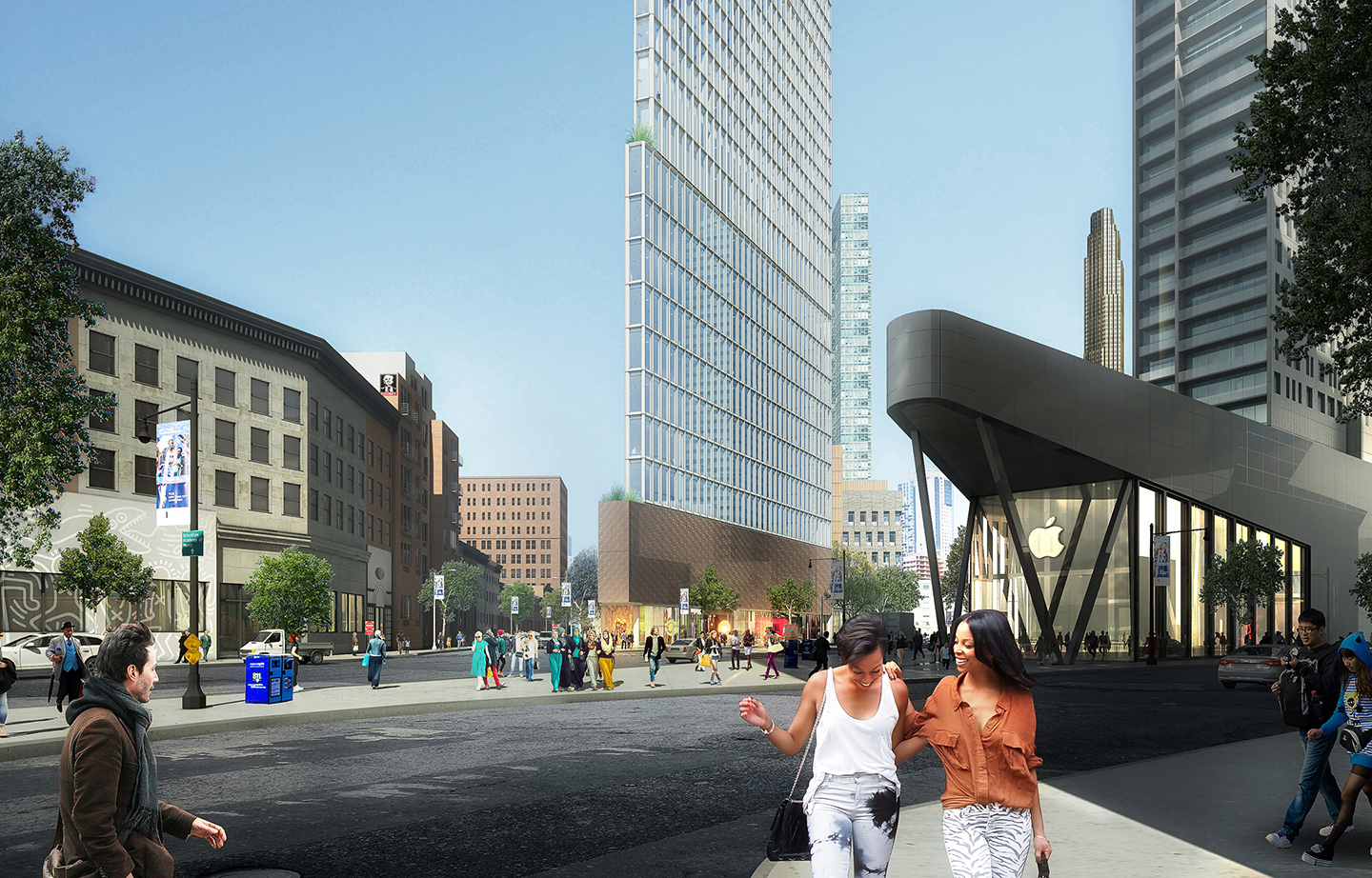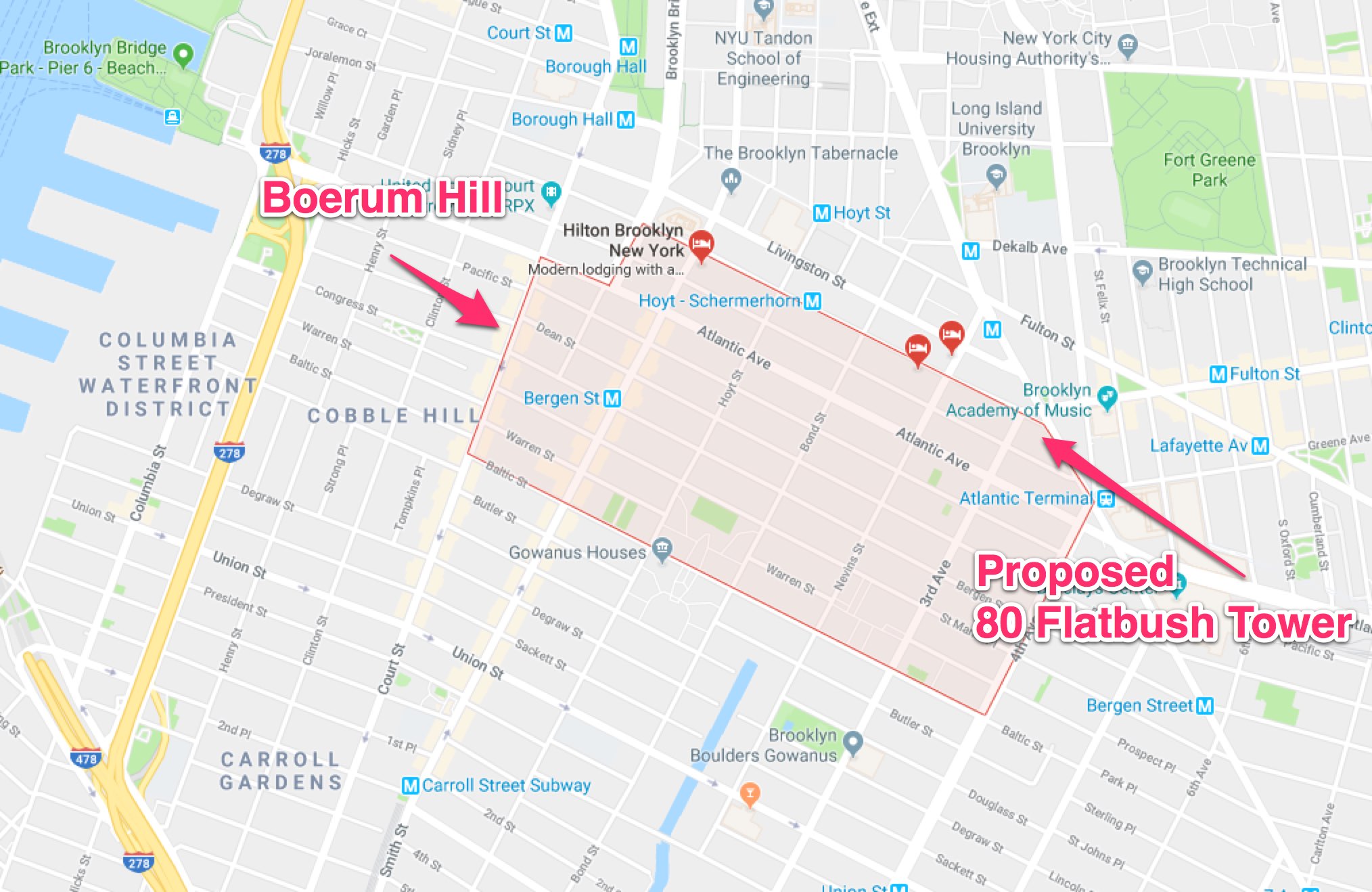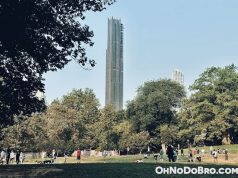
We’ve covered a lot of the negative emotions around the development of a giant tower at 80 Flatbush, right across from Atlantic Terminal, including neighbor protests and a CB2 vote against.
With a public hearing hosted by Brooklyn Borough President Eric Adams happening tonight, why not take a look at the reason people are for the new building?
Regina Myer, president of the Downtown Brooklyn Partnership, penned an op-ed in Crain’s New York Business today. Note that Downtown Brooklyn Partnership is a nonprofit local development corporation of which Jared Della Valle of Alloy Development (the company proposing to build 80 Flatbush) is a board member. Whew. Got that?
The piece starts by talking about the large number of people who have moved to Brooklyn in the past year:
Nowhere is the city’s housing-affordability crisis more pronounced than in Brooklyn, where an influx of 144,000 residents over the past decade has added pressure to a market struggling to keep up.
With that premise, Myer implores us that it’s not just about building new units for all these people, but about being thoughtful about where we build. Her argument for 80 Flatbush mostly being that we need mixed-use buildings like this close to hubs such as Atlantic Terminal.
But solving the housing crisis shouldn’t entail building just anywhere. We have to be thoughtful about where we provide that critical supply, with key priorities in mind: Build where there’s infrastructure to support new and existing residents, and where density has historically and continually existed.
It’s a valid argument…if you don’t think about it too hard. So let’s think about it a little hard.
This is the same argument that was used to re-zone Downtown Brooklyn in 2002 (in addition to wanting to build new bustling areas outside of Manhattan in a post-9/11 city). Downtown Brooklyn is ideal because it’s close to nearly every single train line, and it’s one stop outside Manhattan on several lines.
In fact, Downtown Brooklyn is even closer to the city than Atlantic Terminal.
That re-zoning in 2002 ushered in the huge construction projects that we’re seeing today. We’re getting a lot of new residential units. I mean, a lot. As in, how the hell are prices going to hold at their current levels?
According to the New York Times, there are 28,400 rental units expected to be built in Brooklyn over the next several years. Holy moly. Let that sink in.
Now let’s go back to Regina’s piece in Crain’s. All of Brooklyn has seen an influx of 144,000 residents in the past decade. Yes, all of Brooklyn, from Brighton Beach to Williamsburg. Yes, “residents” not families. Yes, over the past ten years.
Will the market be able to fill all those new rental units? Based on those numbers, it seems very unlikely. Especially given the fact that all these new rental units in Downtown Brooklyn are “luxury,” with fancy appliances, floor-to-ceiling windows, and amenities up the wazoo.
Needless to say, we do need new housing closer to large transportation hubs. That’s why we re-zoned Downtown Brooklyn in 2002. And it was such a good idea, that we mayyyy have overdone it a little bit.
But if we already re-zoned Downtown Brooklyn to allow towers like this, why does 80 Flatbush need special approval? It’s because it’s not in Downtown Brooklyn.
It’s in Boerum Hill.

So, yes, the city did need more apartments near transportation hubs. They needed it 16 years ago. Now we have more apartments than we know what to do with. Expensive ones, too. Not affordable to most New Yorkers.
That’s no longer a valid argument, especially when you’re trying to build outside of Downtown Brooklyn. We have an entire new neighborhood dedicated to having housing near infrastructure that can support them. If you want to develop giant towers, do it there.
Although, I guess we could use more office space, and two new public schools (also all part of the proposal). So who knows?


